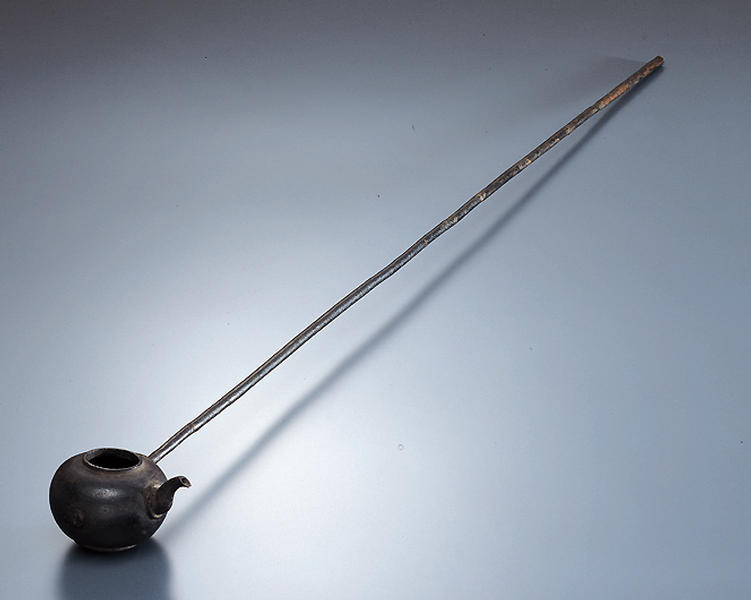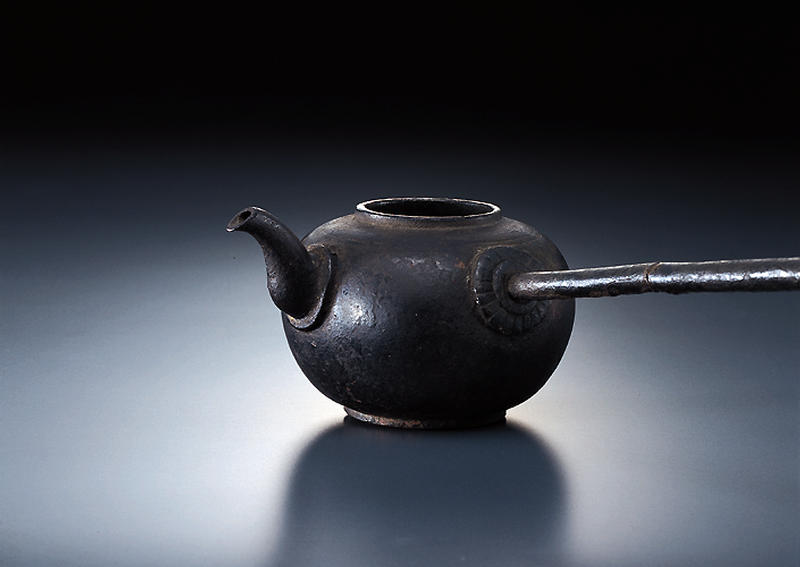Ritual Ladle
- Kamakura period
- 13c
- Cast bronze
- H-5 D-9 W-81.5
- Handed down in Nigatsudo, Todaiji temple
Catalogue Entry
Kamakura period, 13th century (dated 1247)
Cast bronze
Length, 81.5cm; jar height, 5.0cm
A small, wide-mouthed jar made of cast bronze is attached to a long handle to form a ladle, and this ladle would have been used in a temple to scoop up sanctified water. The small jar has a low foot and a flat, rounded torso fitted with a short spout. The long handle pierces the torso of the jar, and its tip is caulked shut. The handle is made of bronze sheeting wrapped around an iron rod and has been formed to look like a length of bamboo.
The side of the jar has a carved inscription which identifies the ladle as a ritual ladle and lists the date of the 5th day of the 2nd month of Kangen 5. Another line of the inscription is not fully decipherable.
The form of this ladle is the same as extant ladles at Todaiji, Nara (4 ladles extant, all designated Important Cultural Properties), and thus this ladle might also be considered to have been originally in that temple's collection. In addition, three of the four ladles at Todaiji are inscribed with dates -- 3rd day of 2nd month Kencho 5, 13th day of 2nd month Kencho 7, a day in the 8th month Bun'ei 4--and the 4th has an inscription identical to the present ladle, 5th day of the 2nd month of Kangen 5.
At Todaiji, these ladles are used as Omizutori to sprinkle sanctified water on pilgrims and parishioners after the "Running Ceremony" of the famous Nigatsudo Shunie. The form of the pre-sent ladle's jar and spout are typical of these ritual utensils from the Kamakura period, and as it is in a particularly fine state of preservation, the present ladle is an extremely important example of one form of ritual utensil used at the Shunie of Todaiji during Japan's medieval period. SS

